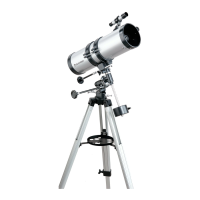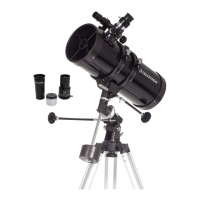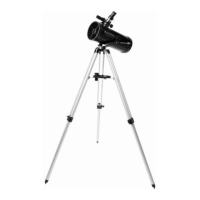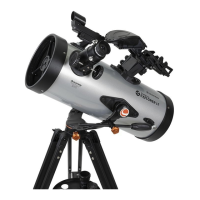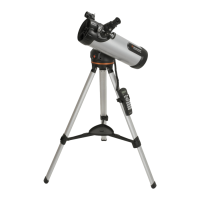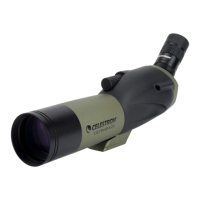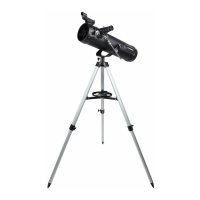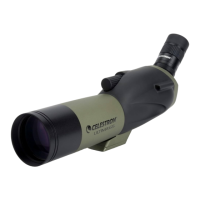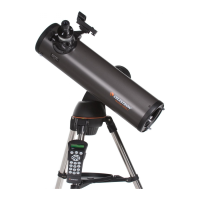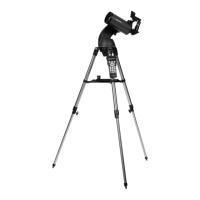Do you have a question about the Celestron 127SLT and is the answer not in the manual?
Essential safety precautions to prevent eye damage and equipment harm.
Step-by-step guide for connecting the main telescope components.
Instructions for installing batteries or connecting an external power source.
Overview of the hand controller's functions and basic navigation.
Detailed steps for aligning the telescope with celestial objects.
Guide on accessing and choosing celestial objects from the database.
Configuration options for tracking, limits, and other telescope settings.
Accessing advanced functions like GPS, factory reset, and hibernate mode.
Instructions on how to achieve a sharp image of celestial objects.
Formula and examples for determining telescope magnification levels.
Tips for optimal viewing conditions and telescope usage.
Guidance on viewing planets, including tips for detail and contrast.
Advice for viewing nebulae, clusters, and galaxies in dark skies.
Explanation of transparency, sky illumination, and seeing effects on observation.
Proper methods for cleaning telescope lenses and mirrors.
Procedure for aligning the telescope's optical components for optimal performance.
Description of various eyepiece designs and their focal lengths.
Details on filters to enhance deep sky views in light-polluted areas.
Technical details on the telescope's optical design and performance metrics.
Definitions of astronomical and telescope-related terminology.
Information on connecting the telescope to a computer for control.
Reference map illustrating global time zones for alignment purposes.
Essential safety precautions to prevent eye damage and equipment harm.
Step-by-step guide for connecting the main telescope components.
Instructions for installing batteries or connecting an external power source.
Overview of the hand controller's functions and basic navigation.
Detailed steps for aligning the telescope with celestial objects.
Guide on accessing and choosing celestial objects from the database.
Configuration options for tracking, limits, and other telescope settings.
Accessing advanced functions like GPS, factory reset, and hibernate mode.
Instructions on how to achieve a sharp image of celestial objects.
Formula and examples for determining telescope magnification levels.
Tips for optimal viewing conditions and telescope usage.
Guidance on viewing planets, including tips for detail and contrast.
Advice for viewing nebulae, clusters, and galaxies in dark skies.
Explanation of transparency, sky illumination, and seeing effects on observation.
Proper methods for cleaning telescope lenses and mirrors.
Procedure for aligning the telescope's optical components for optimal performance.
Description of various eyepiece designs and their focal lengths.
Details on filters to enhance deep sky views in light-polluted areas.
Technical details on the telescope's optical design and performance metrics.
Definitions of astronomical and telescope-related terminology.
Information on connecting the telescope to a computer for control.
Reference map illustrating global time zones for alignment purposes.
| Aperture | 127 mm (5 ") |
|---|---|
| Focal Length | 1500 mm |
| Focal Ratio | f/12 |
| Optical Design | Maksutov-Cassegrain |
| Highest Useful Magnification | 300x |
| Tripod | Steel |
| Computerized | Yes |
| Database | 40, 000+ objects |
| Lowest Useful Magnification | 18x |
| Limiting Stellar Magnitude | 13 |
| Resolution (Rayleigh) | 1.1 arc seconds |
| Resolution (Dawes) | 0.91 arc seconds |
| Light Gathering Power (Compared to human eye) | 329x |
| Motorized Tracking | Yes |
| Mount Type | Motorized Altazimuth |
| Finderscope | StarPointer |
| Alignment Procedures | SkyAlign, Two-Star Align, Solar System Align |
| Power Requirements | 8 x AA batteries |
